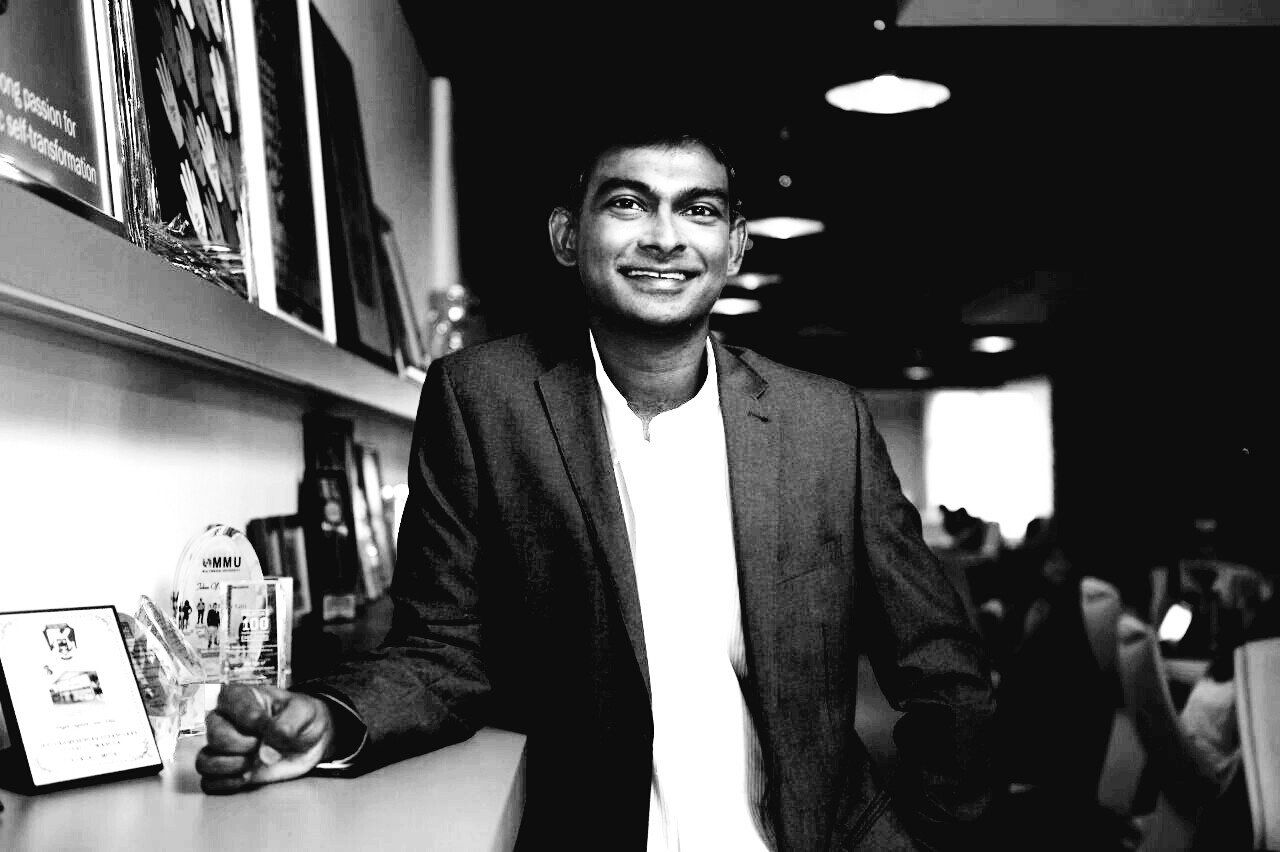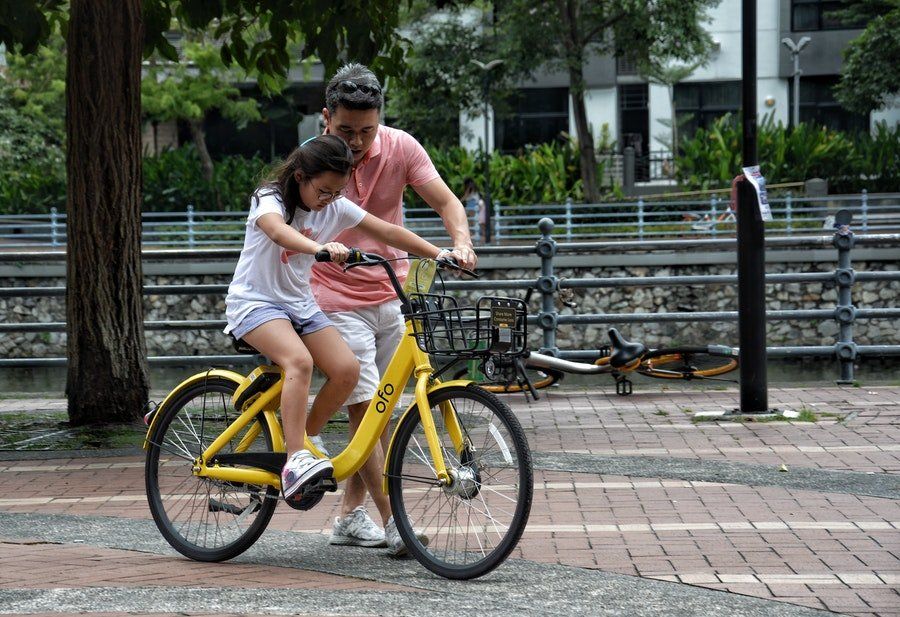Smile Like Soichiro Honda

Last week, during an intense planning meeting, two of my employees walked in late. I smiled at both of them as they waltzed into the meeting room. One of them took my smile positively. She interpreted my smile meaning “the boss is so relieved to see me here” and “I am such a critical part of the team.” She believed my smile implied that I truly needed her to get the job done. The other person interpreted the same smile completely differently.
He saw the smile as a sarcastic smile indicating my annoyance and anger at his lack of punctuality.
A week later, as I was reviewing both their work from the meeting, you could see a marked difference. One treated the work as joy whilst the other as a chore, still upset at me for my smile.
Same smile, yet two contrasting reactions. Sir Winston Churchill once defined these two types: “a pessimist sees the difficulty in every opportunity whilst an optimist sees the opportunity in every difficulty.” One person that best epitomised this in business was Soichiro Honda, the founder of Honda Motors.
The Early Years of Optimism
Honda was born on Nov 17, 1906 to Mika, a weaver, and Gihei, a blacksmith, who also ran a bicycle repair business.
Honda was hopeless in his studies. Not wanting to disappoint his parents, he cut his family hieroglyphs on an old tire and “signed” his report card himself. Initially, he got away with it. In fact, he started to make fake stamps for other classmates.
But then he got caught. It didn’t stop him from smiling as his teacher yelled at him. His father forced him to sit in a corner for a day with no food as punishment; not because he “cheated”, but because he was stupid enough to get caught by his teacher.
When he dropped out of school at the age of 15, he justified it by saying that “any diploma from school was worth less than a movie ticket.” This was the start of his belief system which justified every event, good or bad, as positive. At 15, without any formal education, Honda left home smiling, and headed to Tokyo to look for work.
He obtained an apprenticeship at the Art Shokai garage. But as he was the youngest there, his work involved only cleaning and preparing meals for others. That didn’t deter him. He viewed that experience positively and worked harder.
During the earthquake of 1923, while everyone was running for their lives, Honda drove out three cars from a burning garage, becoming a hero in the process. Honda had never sat behind the wheel of a car prior to that earthquake. He stayed at Art Shokai for six years, working as a car mechanic. He received a patent and helped Shokai increase their revenue significantly. He tried to develop piston rings but the directors of Shokai thought he was out of his depth and mind.
So in 1928, he quit, returned home and started his own auto repair business at age 22.
The perpetual optimist
Japan was badly hit by the Depression of the 1930s. Honda had started a little workshop called Tkai Seiki, trying to develop the concept of the piston ring. He hoped to sell these rings to Toyota. He laboured night and day even sleeping at the workshop. Soon he had no cash. He still remained positive that his idea would work, so he pawned off his wife’s jewellery for working capital.
Finally, he completed his piston ring and sent a sample to Toyota. The engineers there laughed at him and told him that the rings did not meet their standards. Rather than focus on his failure, he continued working. Two more years of struggle and living barely ensued. Then, he won a contract with Toyota. Positive vibes generally result in positive results.
Bad luck never deters leaders
Just as Honda was getting up and running in his business, he was called up for military service. He did not want to be side-tracked from his business goals, but in typical Soichiro style, he left everything and joined the military, determined to do his best there too.
Fortunately, as he saw it, he was medically examined and found to be colour blind. Thanks to this diagnosis, he managed to avoid military service and was back at Tkai Seiki, trying to manufacture piston rings for Toyota.
The war soon began but with the Toyota contract, Honda’s thoughts were all on building a factory to manufacture piston rings. But building materials were in short supply. What did he do? He invented a new concrete-making process that enabled him to build the factory. The factory was soon built but bad luck hit again. The factory was bombed twice. He tirelessly rebuilt it. Then steel became unavailable. Not again! Did Honda whine and give up?
No. He started collecting surplus gasoline cans discarded by US fighters calling them “gifts from President Truman,” which he used as his new “raw materials” for his manufacturing.
Finally, the Mikawa earthquake destroyed his factory and the dream was over. Honda was left with nothing but his positive spirit. After the war, gasoline shortage forced people to walk or use bicycles. Honda noticed this trend and built a tiny engine, attaching it to his bicycle. Everyone wanted his bicycles and Honda Motors was born. Disaster struck yet again and materials could not be found to supply the demand.
He remained positive. Honda wrote an inspiring letter to 18,000 bicycle shop owners asking them to help him rejuvenate Japan. Five thousand of them responded by advancing him money to build his bicycle engines. Unfortunately, the first models were too bulky. He continued and adapted until finally “The Super Cub” became a reality and success. With success in Japan, Honda began exporting his bicycle engines to Europe and America.
Countless times, Honda Motors was close to bankruptcy, but Honda fought on and on. When the Juno scooter flopped and bankruptcy beckoned, his reaction was to embark on the Tourist Trophy race programme, which eventually brought him to the limelight. Honda remained positive throughout his life. In the 1970s there was another gas shortage causing Americans to want smaller cars. Honda was quick to pick up on that trend, with Honda Corp making tiny cars. This ushered in another wave of success.
Smile, and the world smiles with you! Click to watch the corresponding “Be a Leader” video based on this article.
Positivity attracts positive outcomes
Honda’s positivity attracted positive experiences. Recent research shows how children who smile attract more attention. People are drawn to a positive child than to an unsmiling one. Optimistic people have more positive experiences. Whilst most attribute bad luck to unfortunate people, research seems to indicate that there may not be luck involved. The law of attraction alludes that a negative spirit attracts negative experiences.
So, our attitudes determine the experiences we have, which in turn determine the opportunities and problems that come our way. On June 7, 1936, Honda had an accident at the wheel of the “Hamamatsu” in the opening race at the Tamagawa Speedway. He could not avoid hitting another car that was making its way back onto the track after a pit stop.
Honda was thrown out of the car but was not seriously hurt. His younger brother and mechanic Benjiro fractured his spine. In spite of his wife and father’s lashing at him not to take part in another race, Honda took part in another race in October of the same year. He attributed the accident to one freak incident and decided to move on. Most pessimists would take every single setback as further evidence that the entire world is conspiring against them and give up.
Honda was not a person who was overly positive about everything and sprouted optimistic words everywhere he went. That’s blind optimism. He simply had a positive attitude towards the future, always believing that things will somehow work out. He had the confidence that he could face all the challenges and win.
Optimism helps
Our view of the world and how we interact with it governs how the world reacts and responds to us. In a landmark study by Headey and Wearing, they found that “lucky” people were always lucky. People with bad “luck” would continue to have one bad experience after another. This study, which was later confirmed by other studies, postulates that pessimists tend to have more negative experiences whilst optimists have more positive outcomes.
Optimism has other benefits. In a study of male Harvard undergraduates that started in the 1940s, high amounts of optimism at age 20 predicted good health at 65. Meanwhile, those who were highly pessimistic at the start of the study could not be found at age 65, and were believed to have died. Research carried out on 100,000 women by US scientists found that pessimists had higher blood pressure and cholesterol. Optimistic women had a 9% lower risk of developing heart disease and a 14% lower risk of dying from any cause. Optimists usually love life. They have less stress and tend to have better social lives.
Honda was such a happy man seeing joy in the most mundane things, like manufacturing, sales and dealing with customers. In 1956, he presented a standard job description of “The Three Joys” that every single employee had to learn. The first joy was producing and manufacturing great quality cars. The second was the joy of a seller when a buyer purchases a Honda product. The third was the joy of the buyer. The buyer has to be in a state of delight when purchasing a Honda product. Honda’s mind’s eye saw joy in everything.
Honda believed that any difficulties or setbacks faced were temporary and usually not entirely his fault. According to psychologist Elaine Fox:
Optimistic people accept the world as it is and believe in the innate goodness of humankind. This is in contrast to the mind of the pessimist which is infused with negativity and convinced that their problems are beyond their control and will never go away.
Are you a pessimist? The good news is that you can become an optimist. It’s a learned skill. All it requires is to laugh at yourself more, forgive more, love more, give more and look at everything that happens to you positively. Soon, everything will start becoming positive. Honda, a drop-out, created a great company by being positive. You too can create great things. It all starts with a smile.
Leadership
Tags: Be A Leader, Emerging Leadership, Executing Leadership
Roshan is the Founder and “Kuli” of the Leaderonomics Group of companies. He believes that everyone can be a leader and "make a dent in the universe," in their own special ways. He is featured on TV, radio and numerous publications sharing the Science of Building Leaders and on leadership development. Follow him at www.roshanthiran.com





